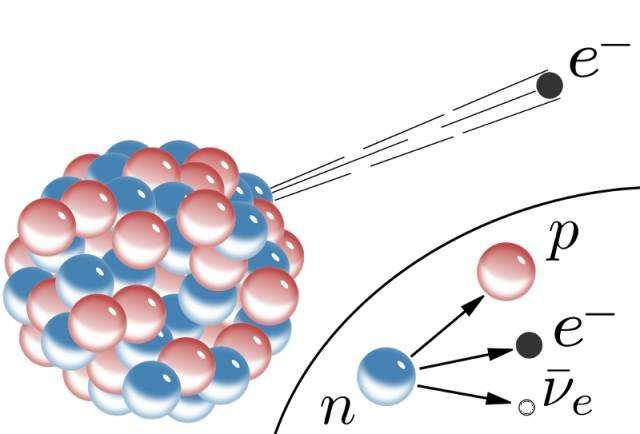What happens when the neutron star material leaves the neutron star? A bit like the scene after the creation of the universe
The neutron star is the densest celestial body except the black hole in the universe. Its mass per cubic centimeter is between 80 million and 2 billion tons (equivalent to the density of the nucleus), which is one hundred million times the density of water. The neutron star is usually only 10 kilometers in diameter, but the mass is larger than the sun with a diameter of 1.4 million kilometers. If we compress our earth into the density of neutron stars, then our earth is only 22 meters in diameter.

The neutron star is small and of high quality. Such a large density makes it have a strong gravitational force. If a spaceship is close to the neutron star, it will be sucked by its strong gravity, and will be broken and become a certain distance. When a beam of atoms flows toward a neutron star, some atoms will undergo nuclear fusion when they come into contact with the surface of the neutron star, but then the fusion will stop, because even the atom cannot exist. Under great pressure, the electron cannot surround the original nucleus above the neutron star. Run, so the electrons will be compressed into the protons of the nucleus to become neutrons, and the entire neutron star is like a neutron ball.

Because of such strong gravitation, the material on the neutron star is difficult to get rid of the neutron star, but the material on the neutron star can leave the neutron star as it is. Why is this? The reason is simple, because there are times when neutron stars collide in the universe, and when they collide, there is a large amount of neutron star material that can be thrown into the universe.

Last year, there were many scientific news about gravitational wave detection. Three professors of MIT professor Reina Weiss, Caltech professors Kip Thorne and Barry Barish also won Nobel for gravitational wave detection research. The award, they used the LIGO gravitational wave detector to find several neutron star collision events in less than ten years, which also shows that the neutron star collision event is not uncommon in the universe, but it should be very in a single galaxy. Rare.

At the moment of the collision of neutron stars, the speed of two neutron stars that circumvent each other is very fast. When they are one hundred kilometers away, the speed of each other will reach several hundred laps per second. At this time, the neutron star can no longer Keeping a spherical shape, and because of the huge mass and kinetic energy of both sides, when the two collide, they will inspire a huge amount of energy. This is a more intense energy release than the supernova explosion. According to scientists' estimates, it can generate 350 billion degrees of high temperature. The temperature of a supernova explosion is three times higher, and due to the extremely high speed of the neutron star collision, a large amount of neutron star material is usually thrown out and exploding at this moment.

Because of the great kinetic energy when leaving the neutron star, most of the neutron star materials that are thrown into the space will not return to the neutron star. However, because they lose the strong pressure and high temperature environment above the neutron star, they will soon be separated. The neutron degenerate state on the neutron star will change rapidly in its material form.

What is the specific change? The first is that the neutrons are no longer closely integrated, but become free neutrons, then their volume will expand rapidly, but at this time, they are still neutrons, but their state is not stable, so then After 15 minutes, they will undergo another change, that is, the neutron beta decay, which is the radioactive beta decay of neutrons. In this process, the neutrons will decay into protons, electrons, and antineutrinos. Way to release).

When neutrons decay, some substances are released in the form of energy. This moment is accompanied by a huge explosion. The total mass of the material decreases after the explosion, but new protons, electrons, and The neutrons of beta decay will be combined into a new element. The neutrons in which beta decay occurs are mostly hydrogen, but due to the different neutron combinations of the neutron star materials, the decay process can form gold. And other heavy elements, this is also the origin of gold, platinum and other heavy elements we can see.
Therefore, when the material on the neutron star leaves the neutron star, it is actually similar to the scene when the hydrogen is created by the universe. The emerging elements will form a nebula, and then some matter will condense into an asteroid or a larger celestial body. Above, including some of the elements in our body, in fact, some are from the neutron star material.